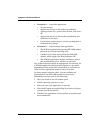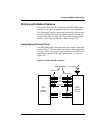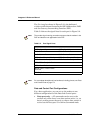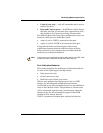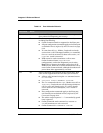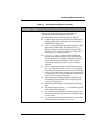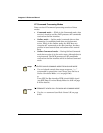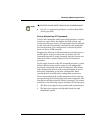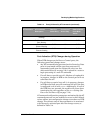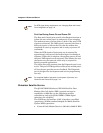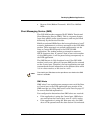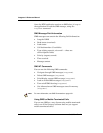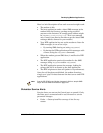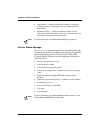
Developing Modem Applications
80-99208-1 Rev. D 5-13
1
2
3
Steps
TO RE-ENTER ONLINE MODE FROM ONLINE-COMMAND MODE
■ Use the ATO command (see Return to Online Data Mode
(O) on page 6-23).
Port(s) Affected by AT Commands
Various AT commands modify port configurations or initiate
actions on a port. Since the modem has both a Data and
Control port that can receive AT commands, the port affected
by the received AT command is defined for each applicable
port configuration. Port configuration is defined by which
ports are active (DTR asserted).
Mapping the effects of an AT command to a particular port, or
possibly ports, largely results from two factors: the AT
command processor is single-threaded, and the Control and
Data ports share a single instance of the AT command
processor.
In this single instance of the AT command processor, a table
defines default values and the state of each configurable
parameter associated with each AT command. This default
and configuration data for each command applies to one or
both ports, depending on the port configuration. Most
commands do not modify these configurable parameters.
Those commands that do modify parameters affect only the
port processing the AT commands, with some exceptions. The
exceptions, which are listed in Table 5-4 on page 5-14, are due
primarily to the following unique attributes of the Data port:
• The Data port supports data (packet and asynchronous).
• The Data port supports configurable baud rate and
handshake signals.




